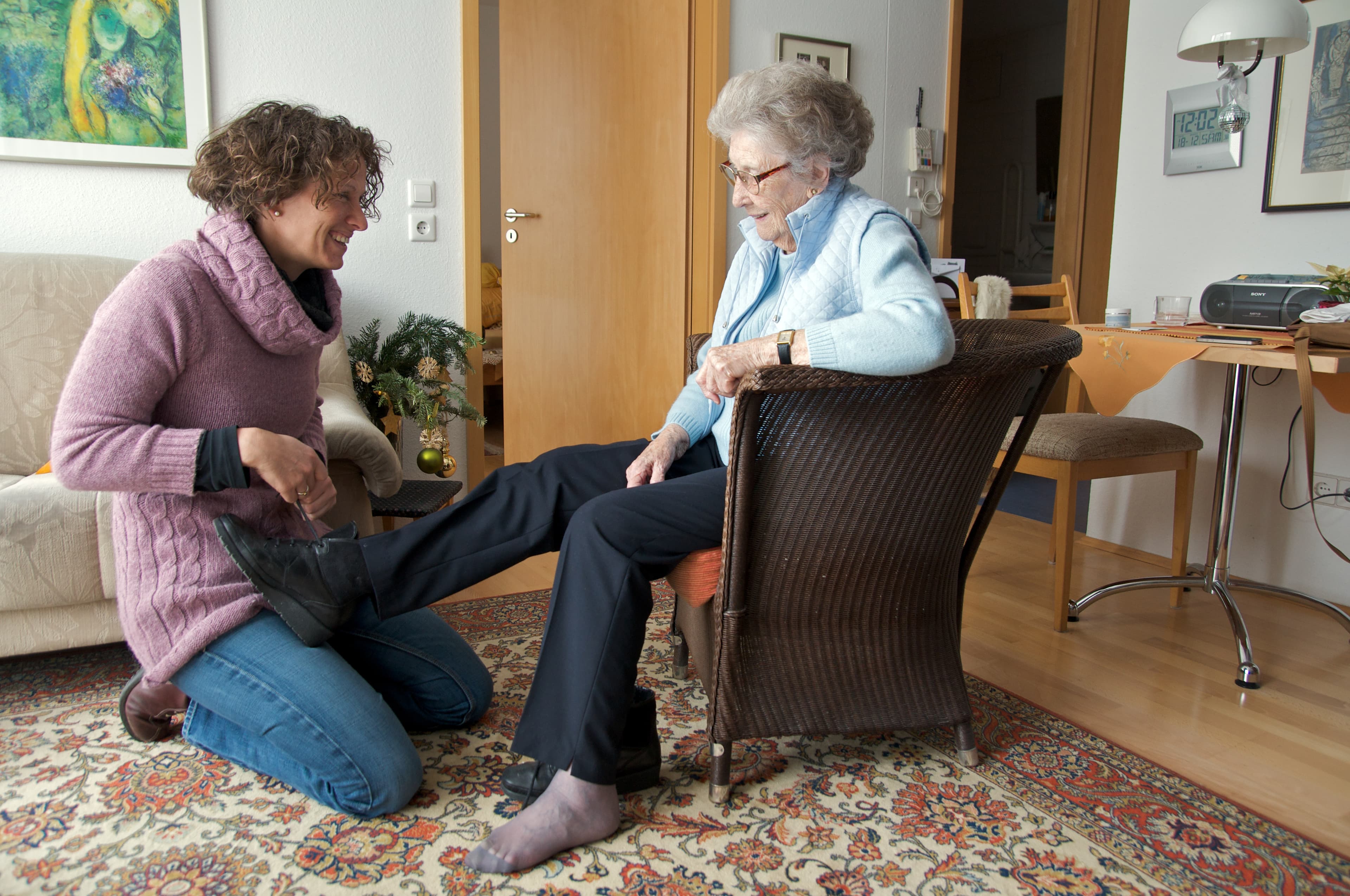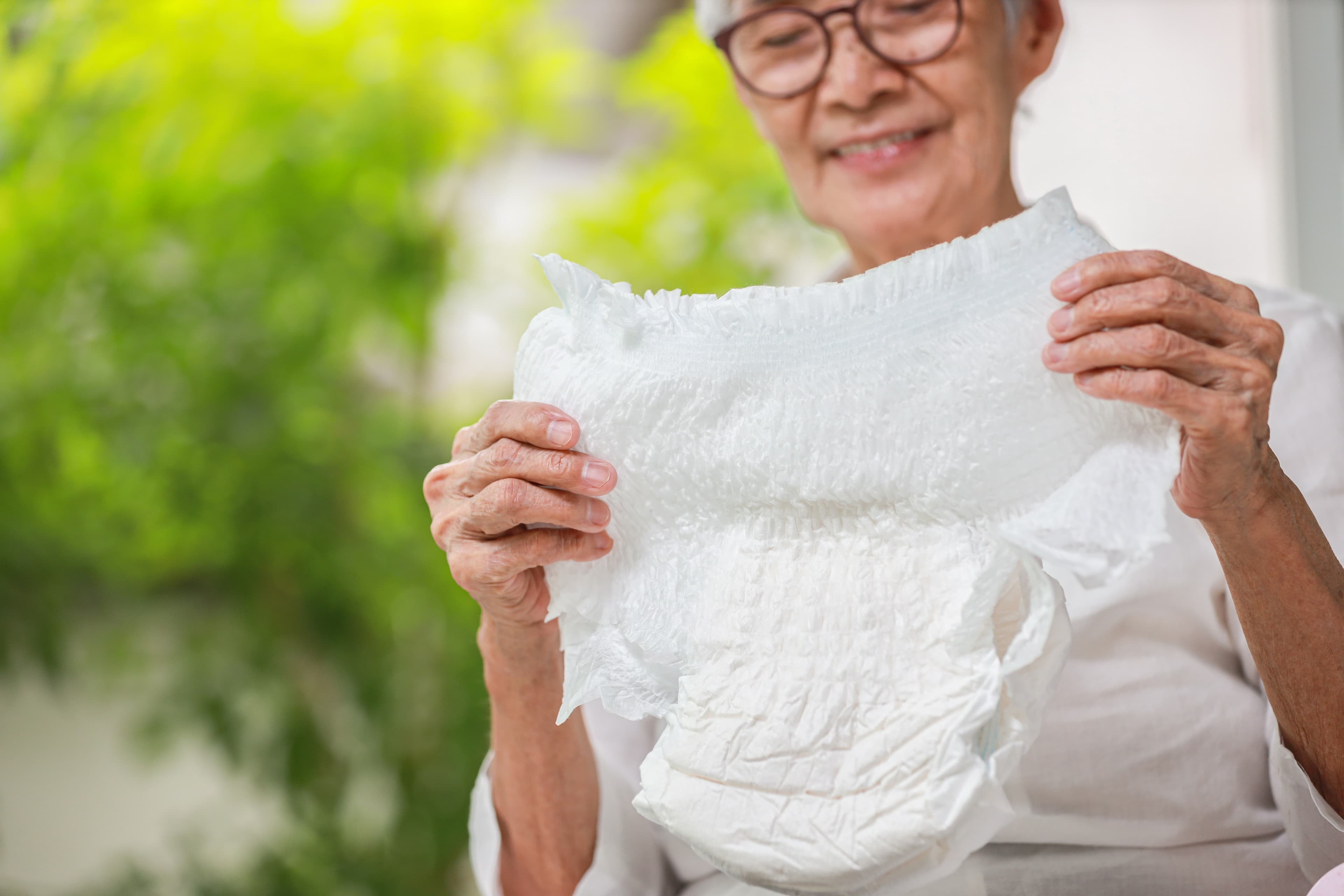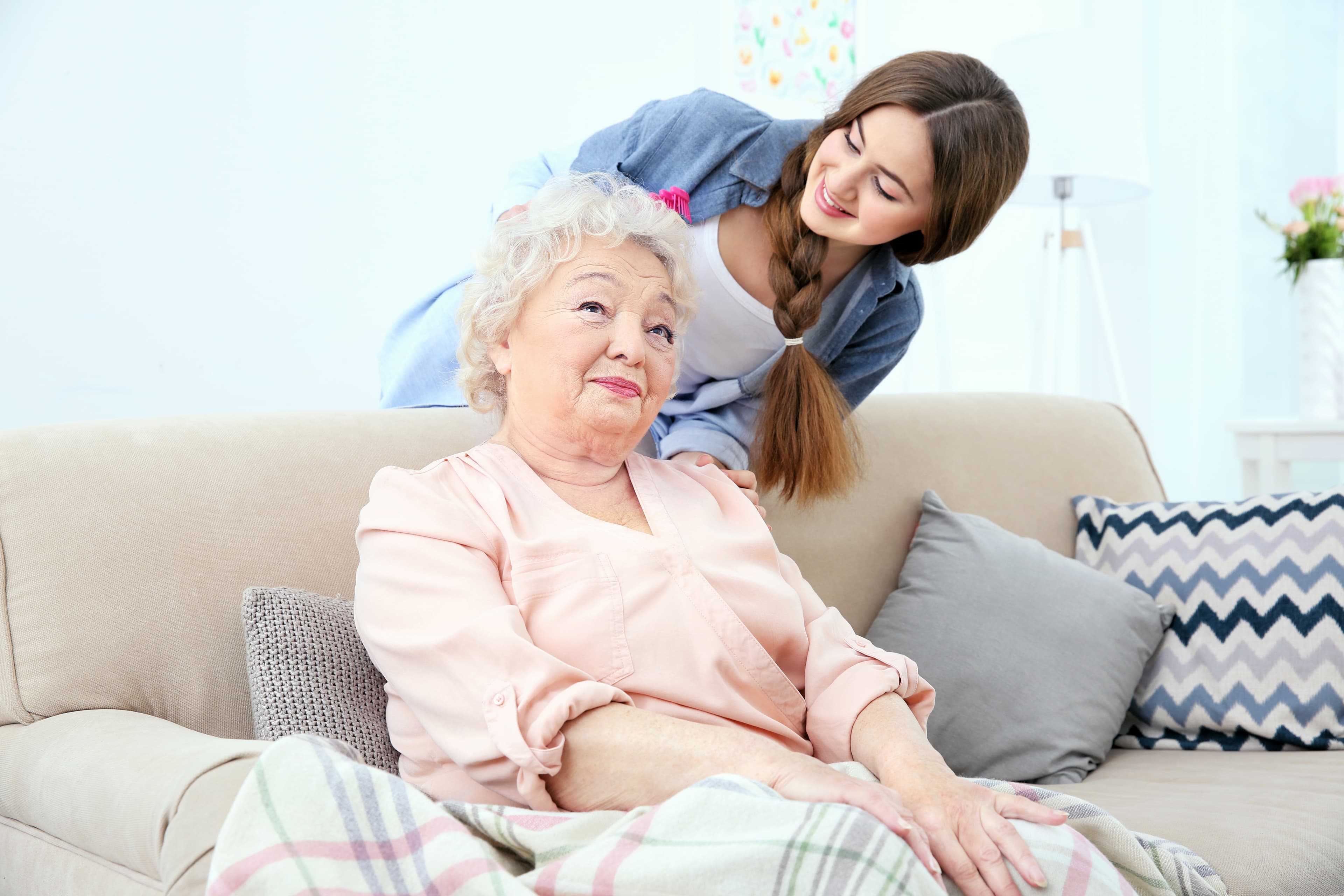Getting dressed is something many of us take for granted; throwing on an outfit is second nature. But for wheelchair users and others with limited mobility, changing clothes can be a time-consuming and potentially risky challenge.
If you recently started caring for a loved one, learning to change their clothing safely is a must. Fortunately, with some preparation, the right strategy, and plenty of practice, you’ll master the art in no time! Here are our top tips for helping a loved one get dressed.
Important Clothing Considerations
Helping a loved one change their clothes isn’t always easy, but certain things can make the process a little less stressful. “Try to purchase garments with velcro or zip fastenings, as this makes dressing a whole lot easier and less time-consuming,” said Sarah Kay, a family caregiver, former healthcare worker, and contributor to women’s lifestyle publication Sincerely Essie.
“Also, opt for clothing made out of stretchy fabrics, such as jersey. These materials are particularly brilliant for people who need help changing, as they are much more flexible to put on and adapt to the body of the individual, making it less tiresome for both parties.”
John Landry, RRT –– a registered respiratory therapist, CEO of Respiratory Therapy Zone, and someone who regularly consults with family caregivers –– concurs. “Certain fabrics make a big difference when helping someone get dressed. Cotton and other natural fibers are breathable and comfortable, and they are also easy to launder and maintain,” Landry said. “Whereas, synthetic fabrics like polyester or nylon may be less comfortable and can be more challenging to care for. Avoid wool; it may irritate the skin.”
Kristen Galloway, a Licensed Occupational Therapist and Certified Dementia Specialist, agrees fabric is important but emphasizes making wardrobe choices based on your loved one’s individual needs.
“The best type of clothing depends on the limitations of the person being cared for,” Galloway said. “Typically, button-up shirts are easier to don than pull-over styles and elastic waistbands are often easier to put on than pants with zippers or buttons.”
“Buttons and zippers can be used if your loved one is capable of fastening these by themselves. If they can’t, it might be a problem when they need to use the toilet or a caregiver isn’t available to assist.”
“For those who are bedbound, I recommend side-snap pants with an elastic waist. These garments make clothing changes and toileting much easier.
How to Help a Patient or Loved One Get Dressed
Now that you know what types of garments to consider, here’s a step-by-step guide to helping your patient or loved one get dressed:
Step 1: Choose an outfit and open all the closures (e.g., buttons, zippers, etc.)
“To make dressing someone easier, prepare all clothing by laying the outfit out beforehand and opening all the closures, so there are minimal disruptions,” Kay said.
“I also recommend setting out all of the clothing in advance,” Galloway said. “It makes the entire process quicker and easier for the individual and the caregiver.”
Step 2: Move your loved one into the proper position
After selecting your loved one’s outfit and opening all of the closures, move them into the proper position.
“The position that’s easiest for your loved one to actively participate in getting dressed will be the best choice. This makes it easier for you (the caregiver) and allows the person with impairments to participate as fully as possible,” Galloway said.
“Most individuals benefit from sitting to dress, but if sitting is a challenge due to weakness or poor balance, then dressing should be performed lying down to ensure safety.”
Step 3: Help your loved one change into their top and bottom
Once your loved one is in the proper position, you can change their clothes.
“Start with the top half of the body first, as this will ensure your loved one has a bit of privacy and stays dignified throughout the process,” Kay said. “The bottom half of the body can be carried out next. This is a more difficult step. However, to make it easier, put your loved one’s feet through their pants or skirt first.”
“Then, pull the garment up to their knees while sitting. At that point, help your loved one stand, pull the rest of the pants or skirt up, and secure it around their waist.”
Step 4: Encourage your loved one to be an active participant
Remember to let your loved one participate as much as they’re able. “When helping someone get dressed, it's important to be patient and respectful of their dignity. Give them as much independence as possible, but be ready to step in and provide assistance as needed,” Landry said.
Galloway agrees. “I recommend allowing the person to do as much of the task as they can do themselves,” she says. “Most people don't want to depend on others to do things for them. Offer assistance as needed, but don't take over the entire task if your loved one is able to participate. Always be patient and respectful.”
Step 5: Communicate, communicate, communicate
Helping someone get dressed requires honesty and trust. “It’s important to keep communicating throughout the entire process,” Galloway said. “So your loved one knows exactly what’s happening and is prepared for what’s coming next.”
Landry seconds this sentiment. “The most important part of helping a loved one get dressed is communication. Be sure to ask your loved one what they need and listen to their concerns and preferences, as everyone’s experiences and needs differ. And, make sure to always have a positive attitude.”
Commonly Asked Questions
1) Should I change the top or bottom first?
Galloway says it varies and is up to you! “I recommend beginning with the item of clothing that’s most difficult for your loved one to put on. If you can get that part done first, before they become fatigued, the rest of the dressing task will be easier.”
2) Is it better to change my loved one while they’re lying down or sitting?
That depends on your loved one’s mobility level and how comfortable you feel. If you’re unsure of which position will be best, consult with a doctor to understand what’s the safest route to take.
Takeaways
As a caregiver, you’re bound to assist a loved one with getting dressed at one point or another. Though it might seem challenging at first, you'll get it down with some planning and practice.
To make the process easier, remember to follow the simple 5-step process mentioned above:
Choose an outfit and undo all of the closures
Move your loved one into the proper position
Help your loved one change their tops and bottoms
Encourage your loved one to be an active participant
Communicate, communicate, communicate
Eventually, you’ll get a routine down that’s quick and efficient.
Need Help?
As always, if you have questions about any of our products or need some caregiving advice, we encourage you to contact our friendly Caregiving Specialists. Call us at (800) 696-CARE or email support@carewell.com.



